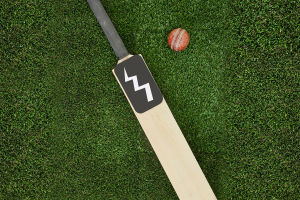Table tennis, or ping pong, is an exciting, fast-paced game that's easy to learn but challenging to master.
It's a fun way to improve hand-eye coordination, build reflexes, and get in some cardio without feeling like a workout.
Here, we'll cover the essential rules and techniques to help beginners get started and enjoy the game right from the first serve.
Understanding the Basics: Rules of Table Tennis
Before diving into techniques, it's essential to understand the foundational rules of table tennis. Here's what every beginner should know:
1. Scoring System: Games are played to 11 points, and you must win by at least two points. Matches can consist of best-of-three, best-of-five, or best-of-seven games, depending on the setting.
2. Serving Rules: The game begins with a serve. The ball must be tossed at least six inches into the air and hit behind the end line. It has to bounce once on the server's side before crossing over the net to bounce on the opponent's side. If the serve clips the net but still lands correctly, it's a "let," and the serve is retaken.
3. Alternate Serves: Players alternate serves every two points, except when the score reaches 10-10 (deuce). At deuce, players switch serves after every point until one player achieves a two-point lead.
4. Winning a Point: A point is scored when the opponent fails to return the ball, hits the ball off the table, into the net, or violates any rules. You'll score points by outmaneuvering your opponent or capitalizing on their mistakes.
5. Table Tennis Etiquette: Acknowledge your opponent's good shots, avoid shouting too loudly, and respect the space of other players if you're in a multi-table setting.
Basic Techniques for Beginners
Mastering some essential techniques can drastically improve your game and make you a formidable opponent. Let's look at a few that every beginner should practice.
1. The Grip
How you hold your paddle greatly impacts your play. There are two main grips:
- Shakehand Grip: This is the most popular grip, resembling a handshake. Hold the paddle as if shaking hands, with the thumb wrapped around the handle and the index finger resting on the rubber side. This grip provides control and power.
- Penhold Grip: Often seen in Asian players, this grip resembles holding a pen. It allows for quick wrist movements and is best suited for close-to-the-table play.
2. The Stance
Positioning is key in table tennis. For a balanced stance, stand with your feet shoulder-width apart, knees slightly bent, and weight forward on the balls of your feet. Keep the paddle in front of you, and be ready to move side to side. This stance helps you react quickly to any shot.
3. Basic Strokes
Learning the four main strokes will help you rally with confidence and control:
- Forehand Drive: Stand sideways, rotate your torso slightly, and swing the paddle forward. Aim to brush the ball on impact, keeping it low and fast across the net.
- Backhand Drive: Facing forward, use your backhand to flick the ball with a compact swing. Focus on a smooth, controlled stroke to keep the ball in play.
- Push Stroke: This defensive move is used to control the ball with light spins. Angle the paddle slightly and "push" the ball back with a short, gentle swing, adding backspin to keep it low.
- Topspin Loop: For more advanced players, the topspin loop adds extra speed and spin. Swing upwards to brush the ball and generate topspin, making it difficult for the opponent to return.
4. Serving Tips for Beginners
In table tennis, a good serve can give you a huge advantage. Here are a few basic serve tips for beginners:
- Backspin Serve: Keep the paddle angled downward and hit the lower half of the ball, creating backspin. This serve causes the ball to bounce low and makes it harder for opponents to attack.
- Sidespin Serve: Hit the ball on its side to add sidespin. This can cause the ball to veer left or right, surprising your opponent and disrupting their return.
- Varying Serves: Avoid predictability by mixing up your serves—use different spins, speeds, and placements to keep your opponent guessing.
Practicing and Developing Your Skills
Regular practice is crucial to mastering these techniques. Here's how to get the most out of your practice sessions:
- Start with Basic Rallies: Focus on maintaining consistent rallies to build control and timing. Try forehand and backhand rallies, aiming for 20-30 hits in a row without missing.
- Practice Footwork: Move from side to side and practice hitting shots from different positions. Good footwork will help you cover the table and be ready for fast-paced rallies.
- Work on Spin Control: Practice serves and strokes with different spins to get comfortable handling various shots. The more you understand spin, the better prepared you'll be to counter it.
- Play Against Different Players: Once you're comfortable with the basics, playing with others helps you adapt to new styles and strategies. You'll gain experience and develop your game approach by facing different types of opponents.
Tips to Enjoy the Game
For beginners, the key is to have fun while improving. Start by focusing on control rather than power, enjoy the process of learning each stroke, and don't be discouraged by losses—they're part of the learning experience. Table tennis is a game that rewards patience, quick reflexes, and strategic thinking, making it both exciting and challenging. With practice, you'll not only enjoy the game more but also develop your unique playing style.


